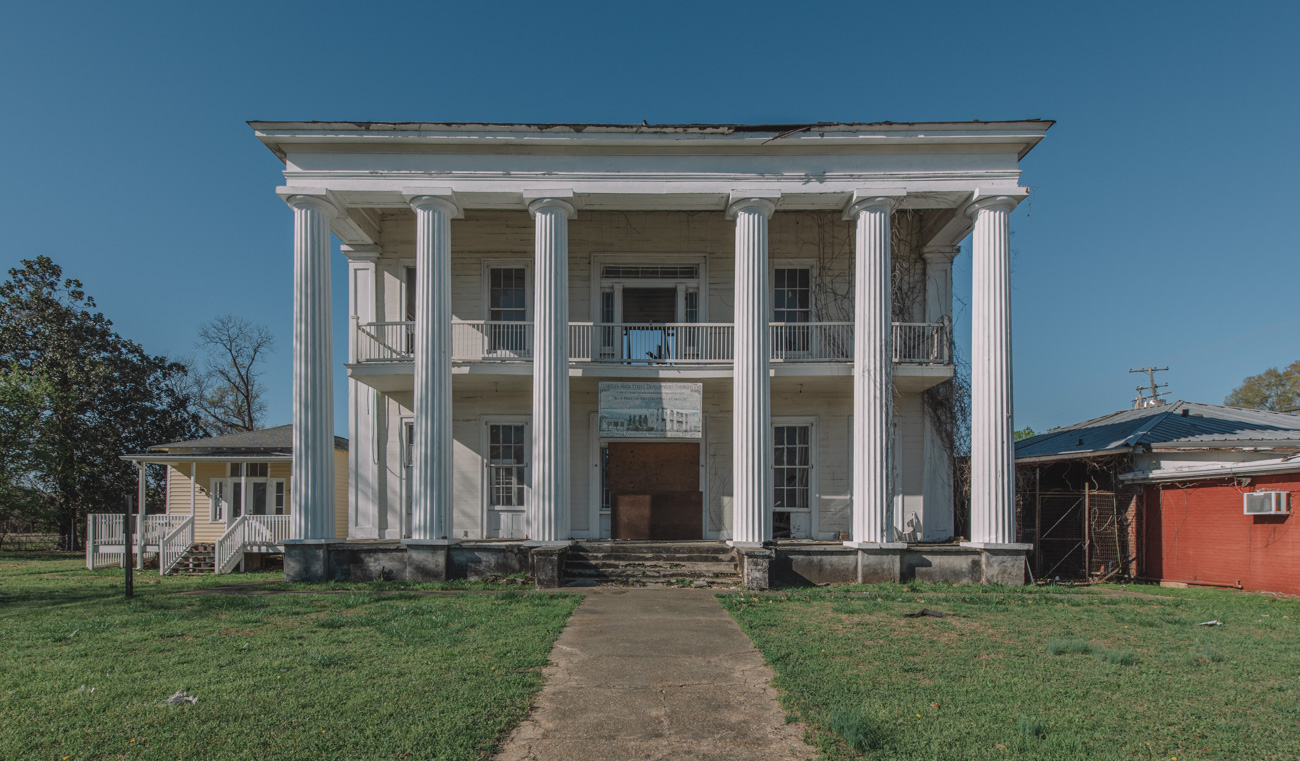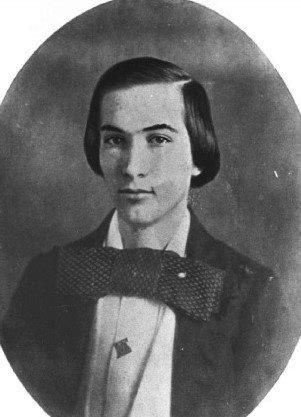| City/Town: • Tuskegee |
| Location Class: • Residential |
| Built: • c. 1850 | Abandoned: • N/A |
| Status: • Abandoned |
| Photojournalist: • David Bulit |
Table of Contents
Johnston Family
The Johnston-Curtright House is among Tuskegee, Alabama’s finest surviving Greek Revival dwellings, featuring a two-story portico with six fluted Doric columns and a hand-carved staircase. The home was constructed around 1850 for Dr. Burr Harrison Johnston, a prominent lawyer and delegate to the Alabama Constitutional Convention. He was the son of Macon County pioneers Samuel and Catherine Harrison Johnston. Dr. Burr Harrison also owned a 1,600-acre cotton plantation 12 miles south of Tuskegee along Cubahatchee Creek. Johnston died on November 12, 1855.
Samuel Burr Johnston
Johnston and his wife Sarah Kincheloe Foote had three daughters and two sons, one of which was Samuel Burr Johnston. Samuel was born on December 2, 1838, and was raised in Tuskegee. Shortly after completing his course at the University of Alabama and had just commenced the practice of law when the Civil War began.
Samuel was one of the first students at his university to volunteer in the Confederate Army. He was elected lieutenant colonel of the Tuskegee Light Infantry which company formed part of the 3rd Alabama Infantry Regiment under the command of Colonel Tennant C. Lomax. In May 1862, Lomax was ordered to take his regiment to join Confederate General Joseph E. Johnston’s division at Fair Oaks Station, in Henrico County, Virginia, in an offensive against Federal corps.
On June 1, 1862, the 3rd Alabama Infantry Regiment was moving into the assault when they were fired upon at short range by Union troops lying in ambush. At the volley, Colonel Lomax, Captain Bob May, and Samuel Johnston fell dead on the field of Seven Pines. The 3rd Alabama Regiment had at the beginning of the war 1,651 men on its roll. Of those men, 260 were killed in battle, 119 were in service, and 605 were discharged or transferred. The regiment lost heavily at Chancellorsville and Gettysburg.
Belle and Emma Johnston
Following the Civil War, Samuel’s sisters Belle and Emma opened a school for young ladies and girls in their home. The school was very popular and many of Tuskegee’s prominent families patronized it. Emma was a gifted musician and she taught music and had many pupils in this melodious art. The school operated until the Tuskegee Public School was established which absorbed the area’s smaller schools. Belle was offered a position but she declined, preferring to retire from the profession instead.
John Sanders Drakeford
Emma married John Sanders Drakeford on April 30, 1878, the brother of Thomas Carlos Drakeford and uncle of John Hamilton Drakeford. John S. Drakeford was born on August 15, 1838, and was considered one of the most prominent citizens and the oldest native-born inhabitant of Tuskegee at the time of his death. In 1861, he volunteered in the Tuskegee Light Infantry, 3rd Alabama Regiment. This was the same regiment Samuel Burr Johnston served as a lieutenant colonel. Drakeford was wounded in the Battle of Seven Pines, but unlike Samuel, he recovered from his wounds, returned to the army, and was with General Robert E. Lee on April 9, 1865, when Lee surrendered.
He served as the Macon County tax collector for several years before serving as county treasurer until his death on March 30, 1915, after a long illness. It was said that he was “a friend of the poor and needy., and was charitable to a fault, and did not have a known enemy during his entire administration. During the period that he lived in the old Johnston residence, it was referred to as “J. S. Drakeford’s Residence” on postcards and in several news articles. As it was with the time, Mrs. Drakeford entertained many guests at the home with tea, sandwiches, and Coca-Cola.
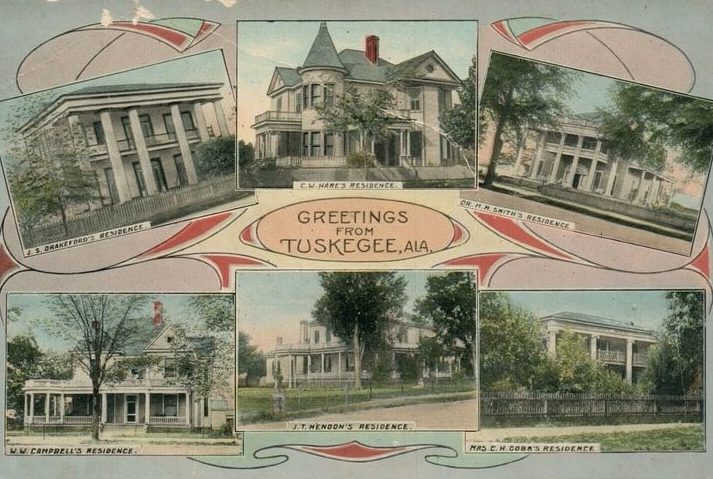
Curtright Family
The couple’s daughter Mabelle Drakeford married Henry Heyward Curtright in 1905, and the couple had four children; Maybelle and Kathryn who died before the age of 3, John Heyward, and William Heyward. They lived in the home until their deaths on November 12, 1956, and August 31, 1958, respectively. The house remained in the family for several years following Henry Heyward’s passing.
Now seriously threatened by neglect, the old Johnston-Curtright house is left open repeatedly to vagrants. Ruinous chimneys and open windows expose sections of the interior to the elements. Local preservationists have attempted for many years to work with the current owners to encourage the stabilization of the building and to look into options for purchase and restoration.
In 2004, the house was listed in the Alabama Historical Commission’s yearly Places in Peril, a program that calls public attention to a select number of Alabama’s threatened historical and archaeological sites. Despite efforts, much of the second floor collapsed in February 2023.
In 2020, HGTV held a nationwide call for a town steeped with history yet suffering from depressed downtowns or main streets in need of transformation in their new series, “HGTV Home Town Takeover.” Since Tuskegee fit the criteria, the Tuskegee Area Chamber of Commerce produced a video showcasing the city and its deep history. Unfortunately for the city of Tuskegee, Wetumpka was chosen instead.
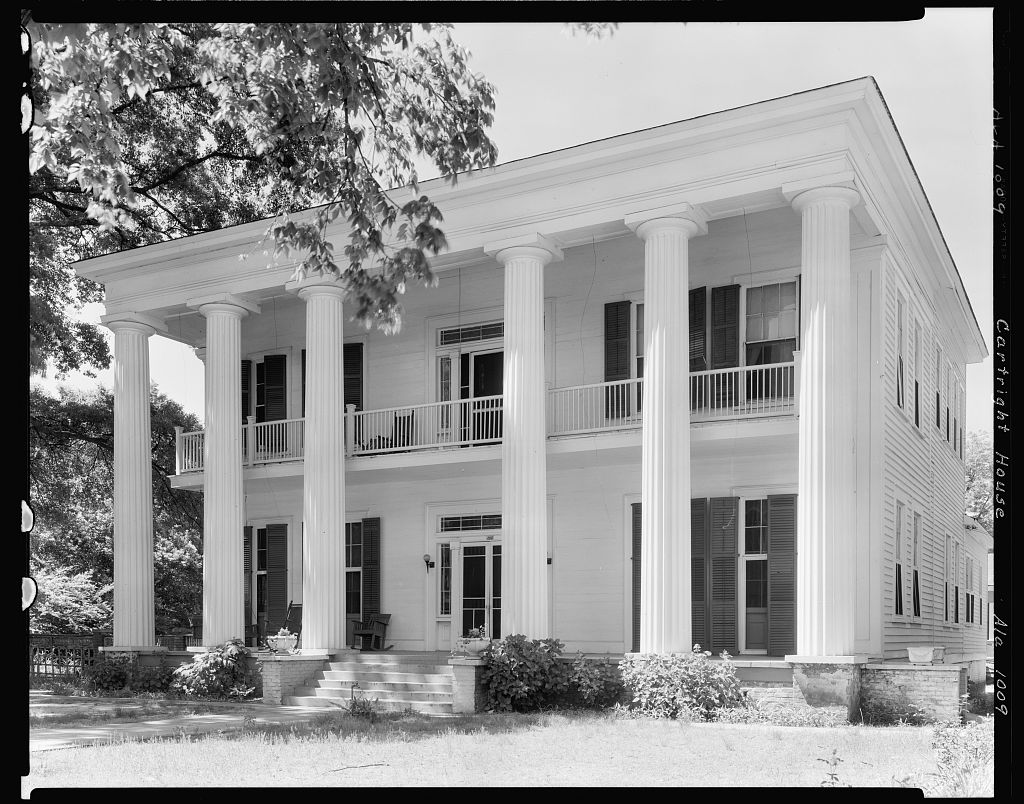
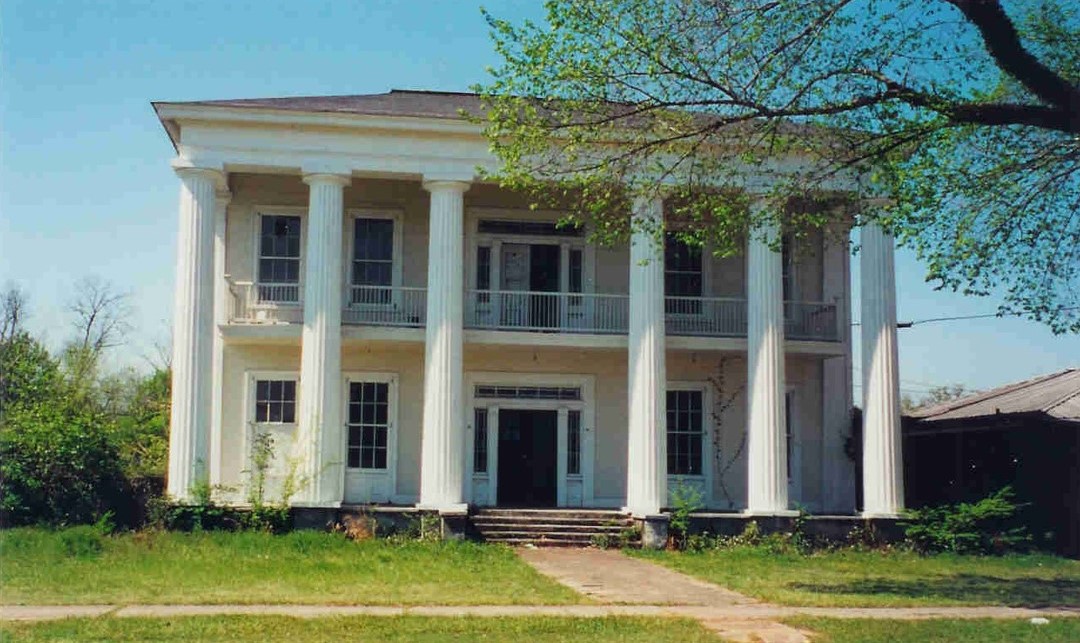
Photo Gallery
*If the photo gallery is not loading, please refresh the page.
References
The Tuskegee News; J. H. Alexander. (April 22, 1915). LONG TRIBUTE TO DEPARTED SOLDIER
The Tuskegee News. (May 24, 1934). President McKinley Guest in Cleveland Thompson’s Home on Visit to Institute; History of City Homes Very Interesting
The Tuskegee News. (November 15, 1956). Mrs. Curtright Passes At Home
The Tuskegee News. (August 10, 1893). Camp “Sam Johnston.”
The Tuskegee News. (May 24, 1934). Miss Belle Johnston’s School
The Tuskegee News. (April 1, 1915). MR. J. S. DRAKEFORD PASSES TO REWARD

